The City and East
The City of London, the heart and financial centre of the old capital, is one of the busiest commercial hubs in the world, with banks, corporate headquarters and insurance companies occupying dramatic showcases of modern architecture. Yet alongside these, you’ll find hidden 17th-century churches, cobbled alleyways, historic markets and fragments of the original Roman city wall.
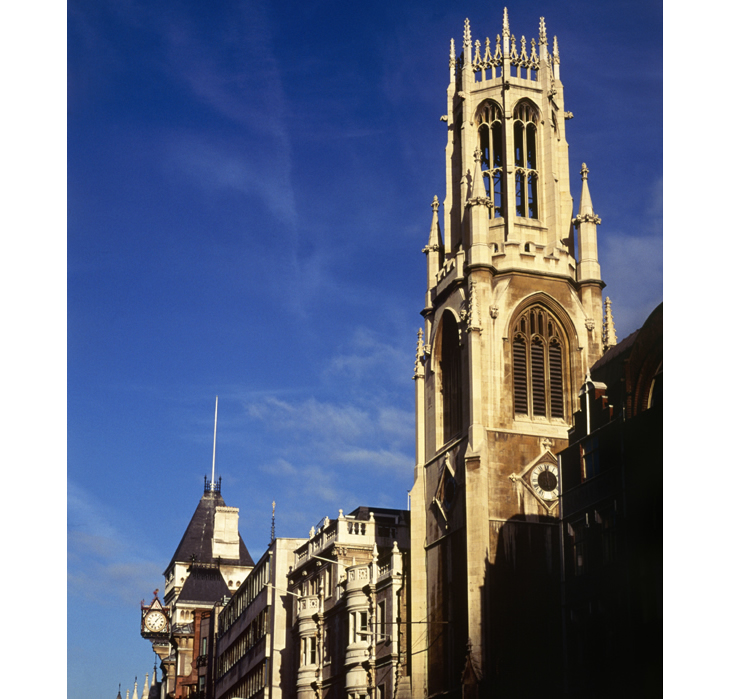
Much of the medieval city was destroyed in the Great Fire of 1666, and in the construction that followed as many as 50 Wren churches were built, including St Paul’s Cathedral. Three of London’s most iconic sights – St Paul’s, the Tower of London and London Bridge – are in this district. The City of London is home to the modern Barbican Centre, a performing arts venue, and to the Museum of London, where the story of the capital is brought to life. To the west are four historic Inns of Court, the heart of legal London. Stretching downstream to the east lies Docklands, a huge area of urban redevelopment. Here is a vibrant, diverse and culturally interesting area with historic warehouses, riverside pubs and restaurants.
BANK OF ENGLAND MUSEUM
The story of Britain’s monetary and banking system since 1694 is told at this museum. The Bank of England is the nation’s central bank, functioning at the heart of one of the world’s largest and most sophisicated financial centres. A visit to this small but lively museum will enlighten you as to its workings and its history. Having been in existence so long, the bank has accumulated a considerable number of items associated with its history. The collections include banknotes and coins, furniture, books, pictures and statues. Highlights are its real gold bullion (each house-brick-sized bar is worth around £70,000), the reproduction banking hall and the award-winning interactive screens and currency dealing computer game.
www.bankofengland.co.uk/museum

 Map Reference 21K
Map Reference 21K  Bartholomew Lane
Bartholomew Lane  020 7601 5545
020 7601 5545  Mon-Fri 10–5
Mon-Fri 10–5  Free
Free  The Don (£–££)
The Don (£–££)  Bank
Bank
THE CHARLES DICKENS MUSEUM
Dating from 1801, this elegant residence is the only surviving house in which Charles Dickens lived for any length of time while in London. He stayed here from April 1837 to December 1839, long enough to secure his burgeoning reputation by writing the final instalments of The Pickwick Papers, almost all of Oliver Twist, the whole of Nicholas Nickleby and the start of Barnaby Rudge. Opened as a museum in 1925, the house now holds the finest collection of Dickens memorabilia in existence, with many of the exhibits reflecting the novels that were written here.
www.dickensmuseum.com

 Map Reference 17M
Map Reference 17M  48 Doughty Street
48 Doughty Street  020 7405 2127
020 7405 2127  Mon-Sat 10–5, Sun 11–5 (last admission 4:30)
Mon-Sat 10–5, Sun 11–5 (last admission 4:30)  Inexpensive
Inexpensive  The Lamb (£–££)
The Lamb (£–££)  Russell Square, Chancery Lane
Russell Square, Chancery Lane
COURTAULD GALLERY
The Courtauld Gallery displays some of the most familiar paintings in the world, mainly from the high-quality collection amassed by industrialist Samuel Courtauld in the 1920s. And all are housed in the impressive Somerset House, a grand 18th-century palace overlooking the River Thames.
The Impressionists and Post-Impressionists are top priority, particularly Van Gogh’s Self Portrait with Bandaged Ear and Manet’s A Bar at the Folies Bergère. Other paintings include a version of Le Déjeuner sur l’Herbe, also by Manet, The Card Players by Cézanne, La Loge by Renoir, Two Dancers on a Stage by Degas and Gauguin’s Tahitian works. The collection goes back to the 14th century, and early masterpieces include works by Cranach the Elder, a superb Holy Trinity by Botticelli and from the early 17th century a large number of paintings by Rubens. There are also some fine 20th-century works, including Matisse.
www.courtauld.ac.uk/gallery
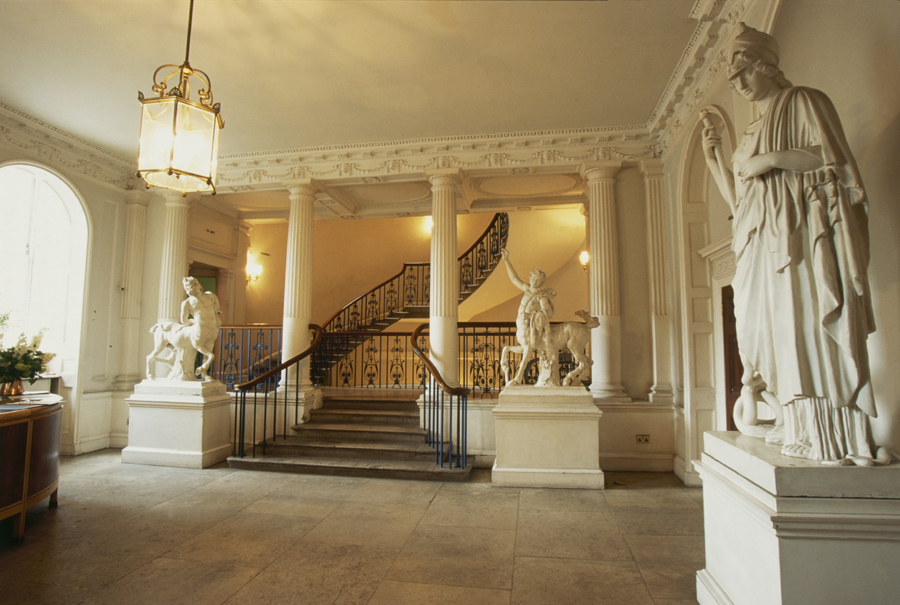
 Map Reference 17J
Map Reference 17J  Somerset House, Strand
Somerset House, Strand  020 7848 2526
020 7848 2526  Daily 10–6 (last admission 5:30)
Daily 10–6 (last admission 5:30)  Inexpensive; children free. Free Mon 10–2 (except public hols)
Inexpensive; children free. Free Mon 10–2 (except public hols)  Gallery Café (£)
Gallery Café (£)  Temple (closed Sun), Covent Garden, Holborn
Temple (closed Sun), Covent Garden, Holborn
DOCKLANDS
London’s Docklands stretch some 8km (5 miles) east of the Tower of London to the old Royal Docks. Historically, this area was the powerhouse of the Empire, at its height the busiest port in the world. It reached the peak of its activity in 1964 but changes in technology (most notably containerization) signalled its demise. Within a decade most of the quays and great swathes of nearby land were derelict and remained so until the 1980s when the government began the world’s largest urban redevelopment project to date. For an excellent insight into the area’s rich history visit the Museum of London Docklands, West India Quay (daily 10–6).
The centrepiece is One Canada Square, Britain’s tallest building at 243m (797ft). A trip on the Docklands Light Railway is recommended for its high-level views into this Brave New London World. The latest DLR line, to London City Airport, opened in 2005. Try also the area’s historical riverside pubs, which include the Prospect of Whitby, the Mayflower and the Grapes.
www.dockland.co.uk
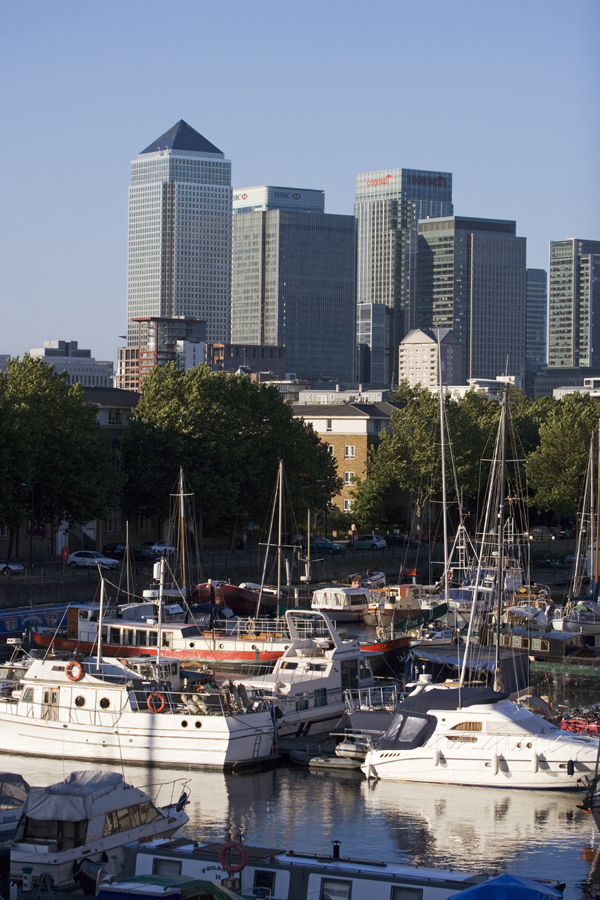
 Map Reference 24H
Map Reference 24H
FLEET STREET
Fleet Street became the original publishing centre of London in 1500, when England’s first press was set up here. From 1702 until the 1980s it was also the home of England’s newspapers until new technology meant they could decamp to cheaper, more efficient offices away from the ‘Street of Ink’. Today it is still worth a visit for St Bride’s Church and, just north of here, Wine Office Court, home to Ye Olde Cheshire Cheese pub, while close by is Dr Johnson’s House, built around 1700 and now a museum dedicated to the writer who gave us the first English-language dictionary.
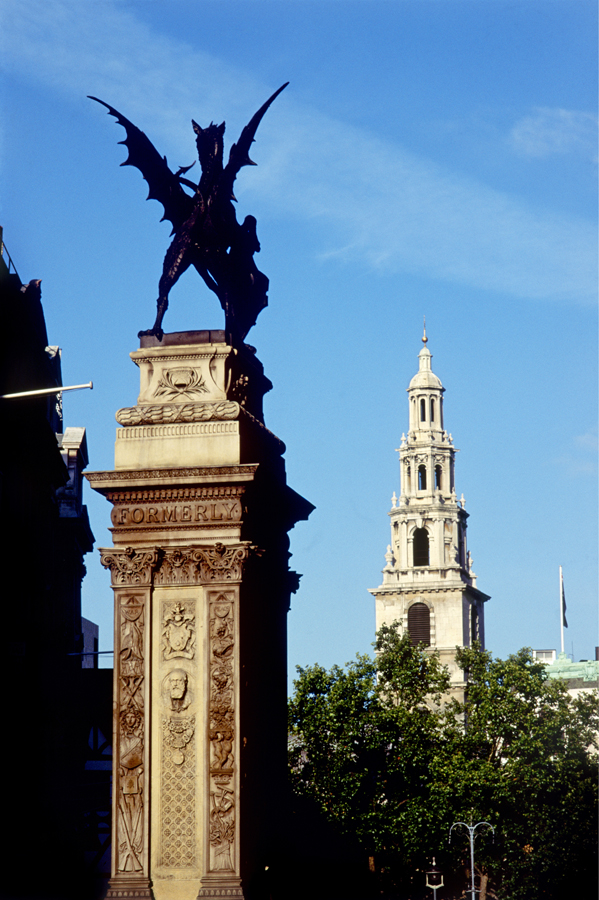
Dr Johnson’s House
 Map Reference 18K
Map Reference 18K  17 Gough Square
17 Gough Square  020 7353 3745; www.drjohnsonshouse.org
020 7353 3745; www.drjohnsonshouse.org  Mon-Sat 11–5:30, (Oct-Apr 11–5)
Mon-Sat 11–5:30, (Oct-Apr 11–5)  Moderate
Moderate  Ye Olde Cheshire Cheese (£)
Ye Olde Cheshire Cheese (£)  Chancery Lane, Temple, Holborn
Chancery Lane, Temple, Holborn
GUILDHALL
The City of London has been governed from this site for over 800 years and the majestic centrepiece of the Great Hall dates back to 1430. Its huge crypt is older, dating from the mid-13th century, and even older are the excavated remains of London’s only Roman amphitheatre. The banners and stained-glass coats of arms that decorate the hall belong to the City Livery companies, formed in medieval times to represent and support their professions, and still in existence today. Within the complex is the world’s oldest Clock Museum and the Guildhall Art Gallery.
www.cityoflondon.gov.uk

 Map Reference 21K
Map Reference 21K  Guildhall, Gresham Street
Guildhall, Gresham Street  020 7606 3030
020 7606 3030  Great Hall and amphitheatre Mon-Sat 10–5. Closed for ceremonies and events. Art Gallery: Mon-Sat 10–5, Sun 12–4. Clock Museum: Mon-Sat 9:30–4:45
Great Hall and amphitheatre Mon-Sat 10–5. Closed for ceremonies and events. Art Gallery: Mon-Sat 10–5, Sun 12–4. Clock Museum: Mon-Sat 9:30–4:45  020 7332 1868
020 7332 1868  Great Hall, amphitheatre, Clock Museum free; art gallery inexpensive (free all day Fri and after 3:30 on other days)
Great Hall, amphitheatre, Clock Museum free; art gallery inexpensive (free all day Fri and after 3:30 on other days)  The Place Below (£), St Mary-le-Bow Church, Cheapside
The Place Below (£), St Mary-le-Bow Church, Cheapside  Bank, St Paul’s, Mansion House
Bank, St Paul’s, Mansion House
INNS OF COURT
The Inns of Court, the training grounds for the country’s barristers (lawyers), date from medieval times. Today only four survive: Inner Temple, Middle Temple, Lincoln’s Inn and Gray’s Inn. Each resembles a small college campus, with a library, chapel, hall and barristers’ chambers (offices). Their grounds, usually open Monday to Friday, are central London’s most charming and peaceful oases, and their narrow alleyways and small courtyards, many still gaslit, are very atmospheric in the early evening.
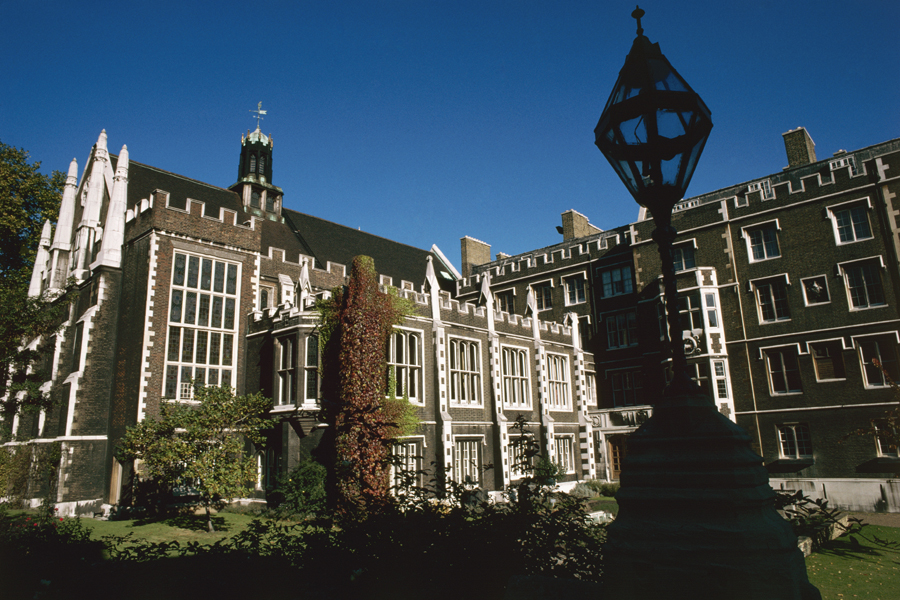
 Map Reference 18K
Map Reference 18K  Free
Free  Temple, Holborn, Chancery Lane
Temple, Holborn, Chancery Lane
LLOYD’S BUILDING
Designed by Richard Rogers, of Georges Pompidou Centre (Paris) fame, this stunning glass and steel tower (‘a post-modern oil refinery’ said one critic) was the most controversial building in England when finished in 1986. It is closed to the public but remains one of London’s most potent architectural statements.
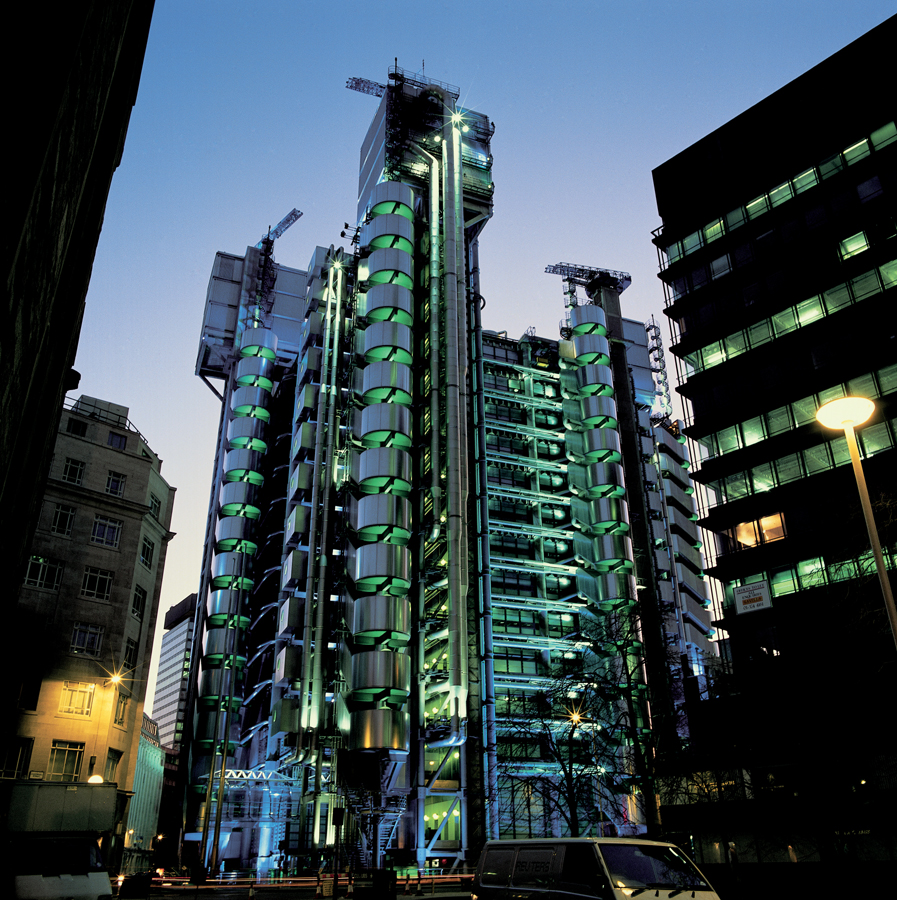
 Map Reference 22K
Map Reference 22K  One Lime Street
One Lime Street  Closed to public
Closed to public  Leadenhall Wine & Tapas Bar (£), Leadenhall Market
Leadenhall Wine & Tapas Bar (£), Leadenhall Market  Aldgate, Liverpool Street
Aldgate, Liverpool Street
MONUMENT
The Monument was erected to commemorate the Great Fire of London in 1666. Its height, 61m (200ft), is the exact distance to the bakery in Pudding Lane, where the Great Fire started. It was commissioned by King Charles II and designed by Christopher Wren and Robert Hooke. You can climb inside the column via a 311-step spiral staircase.
www.themonument.info
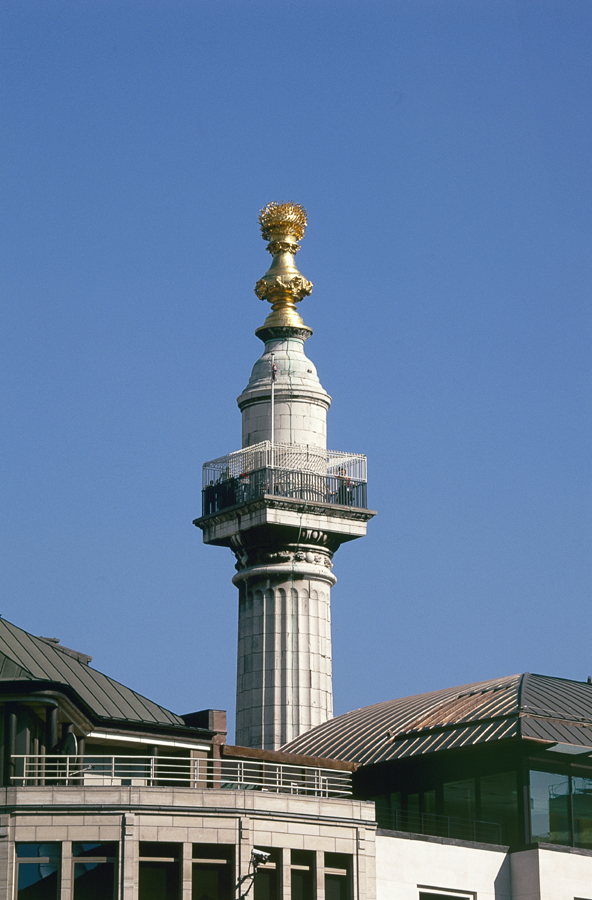
 Map Reference 22J
Map Reference 22J  Monument Street
Monument Street  020 7626 2717
020 7626 2717  Daily 9:30–5:30
Daily 9:30–5:30  Inexpensive
Inexpensive  Leadenhall Wine & Tapas Bar (£), Leadenhall Market
Leadenhall Wine & Tapas Bar (£), Leadenhall Market  Monument
Monument



 Bartholomew Lane
Bartholomew Lane  020 7601 5545
020 7601 5545  Mon-Fri 10–5
Mon-Fri 10–5  Free
Free 
 Bank
Bank






